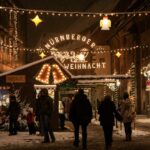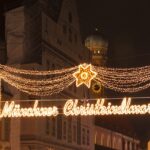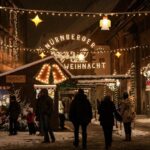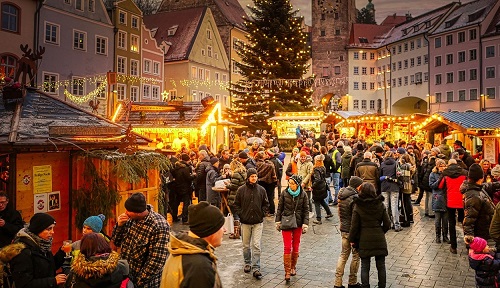
When you step into a German Christmas market, your senses are instantly surrounded by twinkling lights, traditional music, and above all, irresistible smells. The sizzling sausages, sweet roasted nuts, and steaming mugs of Glühwein are more than just treats – they’re deeply rooted in cultural traditions that stretch back centuries.
From regional specialties to timeless classics, this guide explores the essential foods and drinks you should try at any German Weihnachtsmarkt. Whether you’re planning a market-hopping holiday or simply curious about Germany’s festive culinary culture, here’s everything you need to know – and taste.
Related: German Christmas Markets: A Magical Winter Tradition
Bratwurst: The King of the Christmas Market
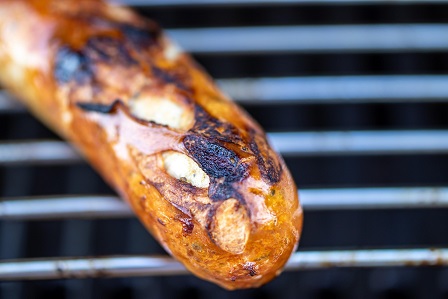
Start your culinary journey with a sizzling classic – Bratwurst. These sausages are grilled over open flames and served in crusty rolls with mustard or ketchup. But they’re not all the same – regional variations abound.
- Nürnberger Rostbratwurst: Small, thin, and served three to a bun. EU-protected and seasoned with marjoram.
- Thüringer Bratwurst: Long, spicy, and traditionally grilled over birchwood.
- Coburger Bratwurst: Coarsely ground pork with nutmeg and lemon zest, often grilled over pinecones.
Each region takes pride in its wurst, and sampling a variety is a must.
Glühwein: The Quintessential Christmas Drink
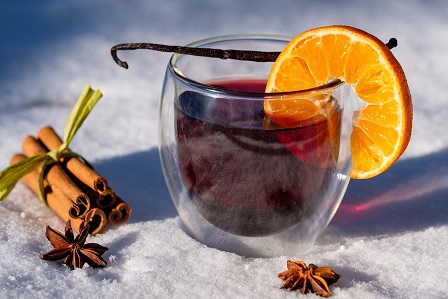
No German Christmas market is complete without a mug of Glühwein. This warm, spiced red wine is both comforting and festive.
Ingredients typically include:
- Red wine
- Cinnamon sticks
- Cloves
- Orange peel
- Star anise and sugar
Many markets offer white Glühwein and fruit versions like cherry or blueberry. For a theatrical twist, try Feuerzangenbowle – a flaming rum-soaked sugarloaf is set above the wine, dripping sweet fire into the pot below.
Tip: Mugs are often collectible. Pay a deposit and keep the mug as a souvenir, or return it for a refund.
Lebkuchen: Germany’s Iconic Gingerbread
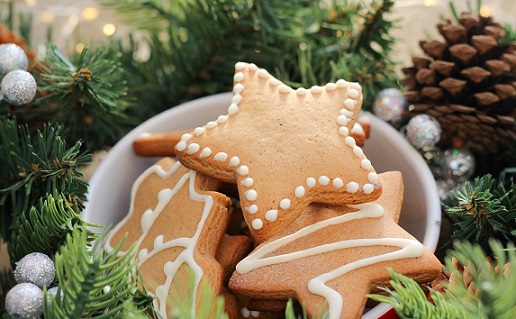
Nuremberg is the spiritual home of Lebkuchen, but these spiced cookies are found across German markets.
Types of Lebkuchen:
- Elisenlebkuchen: High-nut content, no flour, soft texture
- Oblatenlebkuchen: Baked on thin wafers
- Glazed or chocolate-dipped varieties
Often heart-shaped and decorated with icing, they’re as beautiful as they are tasty – but don’t eat the biggest ones, they’re for decoration!
Related: Nuremberg Christkindlesmarkt: Germany’s Most Famous Christmas Market
Roasted Almonds and Chestnuts: Sweet, Warm Street Snacks
The smell of Gebrannte Mandeln (sugar-roasted almonds) wafts through every market. Crunchy, sweet, and warm, they’re a perfect walking snack.
Also look for:
- Roasted chestnuts (Maronen)
- Candied hazelnuts, cashews, and walnuts
These treats reflect centuries-old traditions of winter street vendors.
Kartoffelpuffer: Golden Potato Pancakes
These crispy, fried potato pancakes are the German answer to latkes. Known as Reibekuchen in some regions, they’re served hot with:
- Applesauce (sweet)
- Herb quark or sour cream (savory)
Often cooked to order, you’ll smell them before you see them.
Schmalzkuchen: German Mini Donuts
A favorite with kids and sweet-toothed adults, these bite-sized yeast doughnuts are deep-fried and dusted with powdered sugar.
They’re served in paper cones and best enjoyed fresh. Other variations include:
- Mutzenmandeln (Almond-shaped fried dough)
- Apfelküchle (Apple rings dipped in batter and fried)
Steckerlfisch: Bavarian Fish on a Stick
Not all market food is meat or pastry. In Bavaria, you’ll often find Steckerlfisch – whole seasoned fish (usually mackerel or trout) grilled on sticks over open flames.
Served with bread and pickles, it’s a heartier, regional specialty not to be missed.
Flammkuchen: The German-French Flatbread
Hailing from the Alsace and Rhineland regions, Flammkuchen is a thin, crisp dough topped with crème fraîche, onions, and bacon.
Modern versions might include:
- Mushrooms and cheese
- Spinach and feta
- Apple and cinnamon (dessert style)
It’s a savory-sweet hybrid between pizza and pastry.
Stollen: Germany’s Beloved Christmas Cake
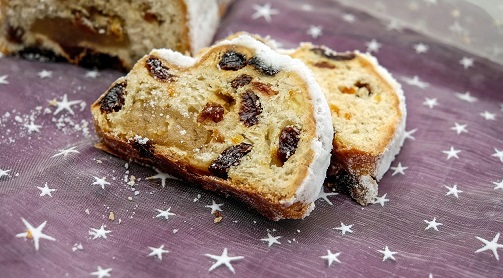
Christstollen is a dense fruitcake from Dresden, packed with raisins, almonds, and citrus peel, then coated in powdered sugar.
Variations include:
- Mohnstollen (poppy seed filling)
- Marzipanstollen
- Nussstollen (nut-based)
The loaf shape symbolizes the baby Jesus wrapped in swaddling clothes – a festive and meaningful treat.
Heiße Getränke: Beyond Glühwein
If Glühwein isn’t your style, don’t worry – winter drink choices abound:
- Kinderpunsch: A non-alcoholic spiced juice for children and non-drinkers
- Heißer Apfelsaft: Hot apple cider, often with cinnamon
- Hot chocolate (Heiße Schokolade): Rich and often topped with whipped cream
- Eierlikör: A creamy German eggnog, sometimes served in chocolate cups
Waffles and Crêpes: European Street Classics
These sweet indulgences are popular throughout Europe but take on a festive flair in German markets.
Try them with:
- Nutella
- Cherries and cream
- Cinnamon sugar
- Spekulatius (spiced cookie butter)
You’ll see waffles shaped like hearts or stars, adding to the cheer.
Local and Regional Specialties
Every region of Germany brings something unique to its Christmas markets:
- Lübeck: Marzipan treats and chocolate-covered marzipan bars
- Aachen: Aachener Printen (a kind of dense gingerbread)
- Swabia: Käsespätzle (cheesy noodles) in small cups
- Franconia: Warm smoked beer (Rauchbier) or red beer (Rotbier)
Related: Planning Your German Christmas Market Trip: Tips, Routes, and Timing
Market Etiquette for Eating and Drinking
- Bring cash: Many stalls don’t take cards
- Return your mug: Or keep it as a souvenir
- Eat standing up or at communal tables: Sitting is limited
- Follow the scent: Let your nose guide your next bite
- Be patient: Lines mean freshness – it’s worth the wait
Taste the German Christmas market Tradition
Food at a German Christmas market is more than sustenance – it’s an expression of culture, memory, and festivity. Each treat tells a story, from medieval guild recipes to childhood nostalgia.
Whether you’re feasting on potato pancakes in Cologne, sipping Glühwein under Rothenburg’s lights, or biting into roasted nuts in Erfurt, you’re partaking in a beloved German ritual. So come hungry, bring curiosity, and let each bite warm both hands and heart.
Discover More in the Series:
- German Christmas Markets: A Magical Winter Tradition
- German Christmas Markets Quiz
- German Christmas Tree: Tannenbaum History and Traditions
- Nuremberg Christkindlesmarkt: Germany’s Most Famous Christmas Market
- Hidden Gems: Small German Christmas Markets Worth Visiting
- Planning Your German Christmas Market Trip: Tips, Routes, and Timing



